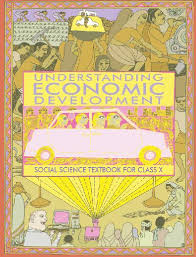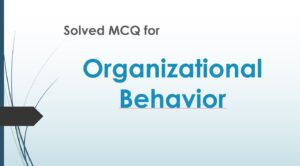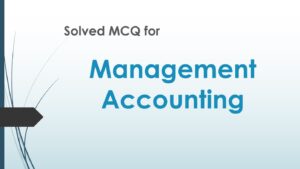Class 10 - Social Science : Understanding Economic Development
Chapter 5 - Consumer Rights

Top Block 1
Page 87
Question : 1: Why are rules and regulations required in the marketplace? Illustrate with a few examples.
Answer :
Rules and regulations are required in the marketplace to protect consumers. Sellers often abdicate responsibility for a low-quality product, cheat in weighing out goods, add extra charges over the retail price, and sell adulterated/ defective goods. Hence, rules and regulations are needed to protect the scattered buyers from powerful and fewer producers who monopolise markets. For example, a grocery shop owner might sell expired products, and then blame the customer for not checking the date of expiry before buying the items.
Question : 2: What factors gave birth to the consumer movement in India? Trace its evolution?
Answer :
The factors that gave birth to the consumer movement in India are manifold. It started as a “social force” with the need to protect and promote consumer interests against unfair and unethical trade practices. Extreme food shortages, hoarding, black marketing and adulteration of food led to the consumer movement becoming an organised arena in the 1960s. Till the 1970s, consumer organisations were mostly busy writing articles and holding exhibitions. More recently, there has been an upsurge in the number of consumer groups who have shown concern towards ration shop malpractices and overcrowding of public transport vehicles. In 1986, the Indian government enacted the Consumer Protection Act, also known as COPRA. This was a major step in the consumer movement in India.
Question : 3: Explain the need for consumer consciousness by giving two examples.
Answer :
There is a need for consumer consciousness so that the buyers themselves can take action against cheating traders. The ISI and Agmark logos are certifications of good quality. Consumers must look for such certifications while buying goods and services. Secondly, to be able to discriminate and make informed choices, a consumer needs to have an adequate knowledge of the goods or services purchased by him/her.
Question : 4: Mention a few factors which cause exploitation of consumers.
Answer :
Exploitation of consumers is caused by a variety of factors. Producers are always looking for easy ways to increase profits. Adulterated or low-quality goods have less production costs, and if the consumer is unaware or illiterate, it is easy to cheat him/her. Also, shopkeepers brush off their responsibility by claiming that the manufacturer is to blame. Consumers feel helpless in this situation. Often, when the consumers are known not to check the retail price of a commodity on its packing, sellers add extra charges to the same. In places where there is no awareness of consumer rights and the COPRA, consumer exploitation is rampant.
Question : 5:What is the rationale behind the enactment of Consumer Protection Act 1986?
Answer :
The rationale behind the enactment of Consumer Protection Act of 1986 is to protect the consumer against unethical and unfair trade practices. Also, it recognises the consumer’s right to be informed, right to choose, right to seek redressal and right to represent himself/herself in consumer courts.
Question : 6: Describe some of your duties as consumers if you visit a shopping complex in your locality.
Answer :
Some of my duties as a consumer if I visit a shopping complex include checking expiry dates of the products I wish to purchase, paying only the maximum retail price printed on the goods, preventing shopkeepers from duping me with defective products, and registering a complaint with a consumer forum or court in case a seller refuses to take responsibility for an adulterated or flawed product.
Question : 7: Suppose you buy a bottle of honey and a biscuit packet. Which logo or mark you will have to look for and why?
Answer :
While buying a bottle of honey or a biscuit packet, the logo or mark one will have to look for is ISI or Agmark. These are logos certifying the quality of goods in the market. Only those producers are allowed to use these marks who follow certain quality standards set by the organisations issuing these certifications. Thus, if a bottle of honey or a biscuit packet has one of these logos on it, then it implies that the product is of good quality.
Question : 8: What legal measures were taken by the government to empower the consumers in India?
Answer :
Legal measures taken by the government to empower consumers in India are plenty. First and foremost being the COPRA in 1986. Then, in October 2005, the Right to Information Act was passed, ensuring citizens all information about the functioning of government departments. Also, under COPRA, a consumer can appeal in state and national courts, even if his case has been dismissed at the district level. Thus, consumers even have the right to represent themselves in consumer courts now.
Question : 9: Mention some of the rights of consumers and write a few sentences on each?
Answer :
Some of the rights of consumers include the right to be informed, the right to choose, the right to seek redressal and the right to representation in consumer courts. Under the RTI Act of 2005, consumers can now even get information regarding the working of government departments. The right to choose allows a consumer to choose if he wishes to continue or discontinue the use of a service he purchased. The right to seek redressal permits a consumer to complain against unfair trade practices and exploitation.
Question : 10: By what means can the consumers express their solidarity?
Answer :
Consumers can express their solidarity by forming consumer groups that write articles or hold exhibitions against traders’ exploitation. These groups guide individuals on how to approach a consumer court, and they even fight cases for consumers. Such groups receive financial aid from the government to create public awareness. Participation of one and all will further strengthen consumer solidarity.
Question : 11: Critically examine the progress of consumer movement in India?
Answer :
The consumer movement in India has evolved vastly since it began. There has been a significant change in consumer awareness in the country. Till the enactment of COPRA in 1986, the consumer movement did not bear much force, but ever since its inception, the movement has been empowered substantially. The setting up of consumer courts and consumer groups has been a progressive move. However, in contemporary India, the consumer redressal process is quite complicated, expensive and time-consuming. Filing cases, attending court proceedings, hiring lawyers, and other procedures make it cumbersome. In India, there are over 700 consumer groups of which, unfortunately, only about 20-25 are well-organised and functioning smoothly.
Question : 13: Say True or False.
(i) COPRA applies only to goods.
(ii) India is one of the many countries in the world which has exclusive courts for consumer redressal.
(iii) When a consumer feels that he has been exploited, he must file a case in the District Consumer Court.
(iv) It is worthwhile to move to consumer courts only if the damages incurred are of high value.
(v) Hallmark is the certification maintained for standardisation of jewellry.
(vi) The consumer redressal process is very simple and quick.
(vii) A consumer has the right to get compensation depending on the degree of the damage.
Answer :
(i) False
(ii) True
(iii) True
(iv) True
(v) True
(vi) False
(vii) True
Mddle block 1
Multiple Choice Questions
Question : 1. Which one of the following logos is used for standardisation of agricultural products? [Delhi, 2012]
(a) I.S.I
(b) Hallmark
(c) Agmark
(d) ISO
Question : 2. In which one of the following courts a consumer should file a case if he/she is exploited in the market? [Delhi, 2012]
(a) Local court
(b) State court
(c) Supreme court
(d) Consumer court
Question : 3. Hallmark is used as a logo for which one of the following? [AI, 2012]
(a) Agricultural products
(b) Jewellery
(c) Electrical goods
(d) Electronic goods
Question : 4. On which one of the following items is I.S.I. used as a logo? [Foreign, 2012]
(a) LPG Cylinder
(b) Jewellery
(c) Gold
(d) Agricultural products
Question : 5. For which of these products does it become mandatory for the producer to get certified? [CBSE CCE 2012]
(a) Fruits
(b) Telephones
(c) LPG Cylinders
(d) Cigarettes
Question : 6. The district court deals with the cases involving claim up to ………….. [CBSE (CCE) 2012]
(a) ₹ 1 crore
(b) ₹ 40 lakhs
(c) ₹ 30 lakhs
(d) ₹ 20 lakhs
Question : 7. The district level consumer court deals with the cares involving claims [CBSE (CCE) 2012]
(a) upto 20 lakhs
(b) upto 15 lakhs
(c) upto 1 crore
(d) upto 25 lakhs
Question : 8. Which of the following rights related to availing details of ingredients of a product? [CBSE (CCE) 2012]
(a) Right to safety
(b) Right to choose
(c) Right to be informed
(d) Right to represent
Question : 9. In which one of the following years was the Right to Information Act Implemented? [CBSE (CCE) 2012]
(a) 2004
(b) 2005
(c) 2006
(d) 2007
Question : 10. The district level court deals with the cases involving claims: [Delhi 2011]
(a) upto ₹10 lakhs
(b) upto ₹20 lakhs
(c) between ₹20 lakhs to ₹1 crore
(d) exceeding ₹1 crore
Question : 11. When did the United Nations adopt the guidelines for consumer protection? [AI 2011]
(a) 1983
(b) 1984
(c) 1985
(d) 1986
Question : 12. Which one of the following statements is false? [Foreign 2011]
(a) The consumer has a right to represent in the Consumer Court.
(b) The consumer redressal process is very simple and very quick.
(c) Hallmark is the certification maintained for standardisation of jewellery.
(d) The consumer has the right to be informed.
Question : 13. In the market place rules and regulations are required for the protection of the
(a) Sellers
(b) Suppliers
(c) Consumers
(d) Owners
Question : 14. In India, the consumer movement as a ……………….. originated with the necessity of protecting and promoting the interests of consumers against unethical and unfair trade Practices.
(a) Cultural force
(b) Social force
(c) Economic force
(d) Political force
Question : 15. Rampant food shortages, hoarding, black marketing gave birth to the consumer movement in an organised form in the year
(a) 1947s
(b) 1970s
(c) 1960s
(d) 1965s
Question : 16. At International level, this has become the foundation for consumer movement
(a) Consumers International
(b) COPRA
(c) Consumers Forum
(d) None of the above
Question : 17. A major step taken in 1986 by the Indian government was the enactment of
(a) RTI Act
(b) Consumer Protection Act.
(c) Consumer Movement
(d) Consumer Courts
Question : 18. In case of Reji Mathew, he suffered due to improper anaesthesia which resulted in brain abnormalities. Who was held responsible by the National Commission after locking into complaint ?
(a) Father
(b) Mother
(c) Hospital
(d) Patient himself
Question : 19. Because of this right, rules have been made so that the manufacturer displays all the information relating to the commodity
(a) Right to choose
(b) Right to be heard
(c) Right to seek redressal
(d) Right to be informed
Question : 20. In October 2005, the Government of India enacted a law known as
(a) Right to Choose Act
(b) Right to Information Act.
(c) COPRA
(d) Public Distribution System
Question : 21. A student who has paid lumpsum fee for course of three years to a coaching institute, now decides in between to discontinue that institute due to lack of quality of teaching. Can this student get proportionate amount of fee refunded as per the law ?
(a) No
(b) Yes
(c) May or May Not
(d) None of them
Question : 22. Consumers have the right to be protected against any danger caused by goods like electrical goods and pressure cookers. The right referred here is
(a) Right to seek redressal
(b) Right to be heard
(c) Right to safety
(d) Right to consumer education
Question : 23. Manufacturer should not use aggressive selling techniques to sell a particular product without giving the consumer a chance to select from alternative products available. Which right is mentioned here ?
(a) Right to safety
(b) Right to choose
(c) Right to heard
(d) Right to be informed
Question : 24. Which right of consumer is violated if the consumers are not allowed to get their claims settled against manufacturer in case they are cheated or exploited ?
(a) Right to seek redressal
(b) Right to choose
(c) Right to be heard
(d) None of them
Question : 25. Consumer movement in India has led to the formation of various organisations locally known as
(a) Consumer Protection Council
(b) COPRA
(c) Resident Welfare Association (RWA)
(d) None of them
Question : 26. Consumer Forums guide consumers on how to file cases and represent individual consumers in the consumer court. Is this statement true ?
(a) No
(b) May or May Not
(c) Yes
(d) Never
Question : 27. Under COPRA, a ……………. quasi-judicial machinery was setup for redressal of consumer disputes.
(a) Two-tier
(b) Three-tier
(c) Four-tier
(d) Five-tier
Question : 28. State level court deals with the cases involving claims between
(a) ₹ 1 to 20 lakhs
(b) ₹ 1 Crore and above
(c) ₹ 20 lakhs to ₹ 1 Crore
(d) Any amount
Question : 29. Logos and certification which help consumers get assured of quality while purchasing the goods and devices are
(a) ISI
(b) Agmark
(c) Hallmark
(d) All of them
Question : 30. National Consumers’ Day in India is observed on
(a) 24 December
(b) 14 December
(c) 14 January
(d) 31 December
Question : 31. World Consumers Rights Day is celebrated on
(a) Jan 15
(b) Feb 15
(c) March 15
(d) Jan 1
Question : 32. The organisation which sets standards of products at the International level
(a) ISO
(b) COPRA
(c) Agmark
(d) BIS
Question : 33. Organisation which sets International food standards
(a) Consumer International
(b) Codex Alimentarius Commission
(c) ISO
(d) COPRA
ANSWERS
|
|
|
|



